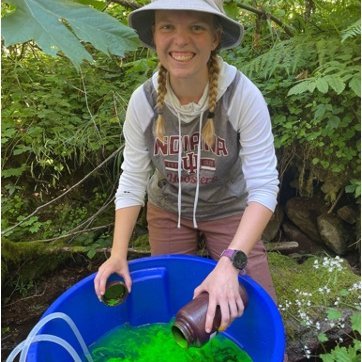Paige S. Becker, Ph.D.
Paige S. Becker
Post-Doctoral Research Fellow
Department of Civil and Environmental Engineering
About Me
I grew up in the front range of Colorado and spent many summers in Grand Lake, at the headwaters of the Colorado River, which piqued my interest in water resources, particularly in the western U.S. When not in front of a computer, I am often found hiking or cuddling with my dog, Regis, reading a good book, running, biking, snowboarding, or anything else that keeps my mind and body busy.
I am also the 2023 Chair-Elect (2024 Chair) of the American Geophysical Union Hydrology Section Student Subcommittee (AGU-H3S) which works to foster a welcoming community of students and early career scientists in the hydrologic sciences.
Education
- BS in Environmental Engineering, Colorado School of Mines, 2017
- MS in Hydrology, Colorado School of Mines, 2018
- Ph.D. in Water Resources Engineering, Oregon State University, 2023
Research
My current research is to work with the Next-Gen Framework from NOAA to build a suite of parameters to predict the impacts of watershed disturbance on streamflows. Particularly, understanding how fire in the west impacts streamflow and building an operational model for users.
My Ph.D. work focused on using a combination of using field methods and numerical models to better scale predictions of exchange from small study reaches to larger segments and beyond.
Broadly I’m interested in work that allows me to have one foot in the stream and other in front of the computer to better understand processes in mountain catchments.
- Watershed Disturbance
- Wildfires
- Hyporheic Zones
- Modeling
- Field experiments
- Water Resources
Publications
-
Becker, P., D. Byrnes, C. Hall, and Y. Rao (2023), Boosting support for students and early-career professionals, Eos, 104, https://doi.org/10.1029/2023EO230294. Published on 3 August 2023.
- Becker, P. S., Ward, A. S., Herzog, S. P., & Wondzell, S. M. (2023). Testing Hidden Assumptions of Representativeness in Reach‐Scale Studies of Hyporheic Exchange. Water Resources Research, 59(1), e2022WR032718.
Doings and Experience
I spent 9 months at Oak Ridge National Laboratory working in the Watershed Systems Modeling Group using the Advanced Terrestrial Simulator (ATS) to model and understand how truncating time scales and physical scales impacts the prediction of hyporheic exchange.
I have 4 summers of fieldwork experience running tracer experiments (slug and continuous rate) with salts and dyes. My notes and instructions on dilution and solute tracer experiments are here.

Contact
Colorado School of Mines
1500 Illinois St
Golden, CO 80401
pabecker@mines.edu
Notice
This page is still a work in progress! Come back for more content in the future!